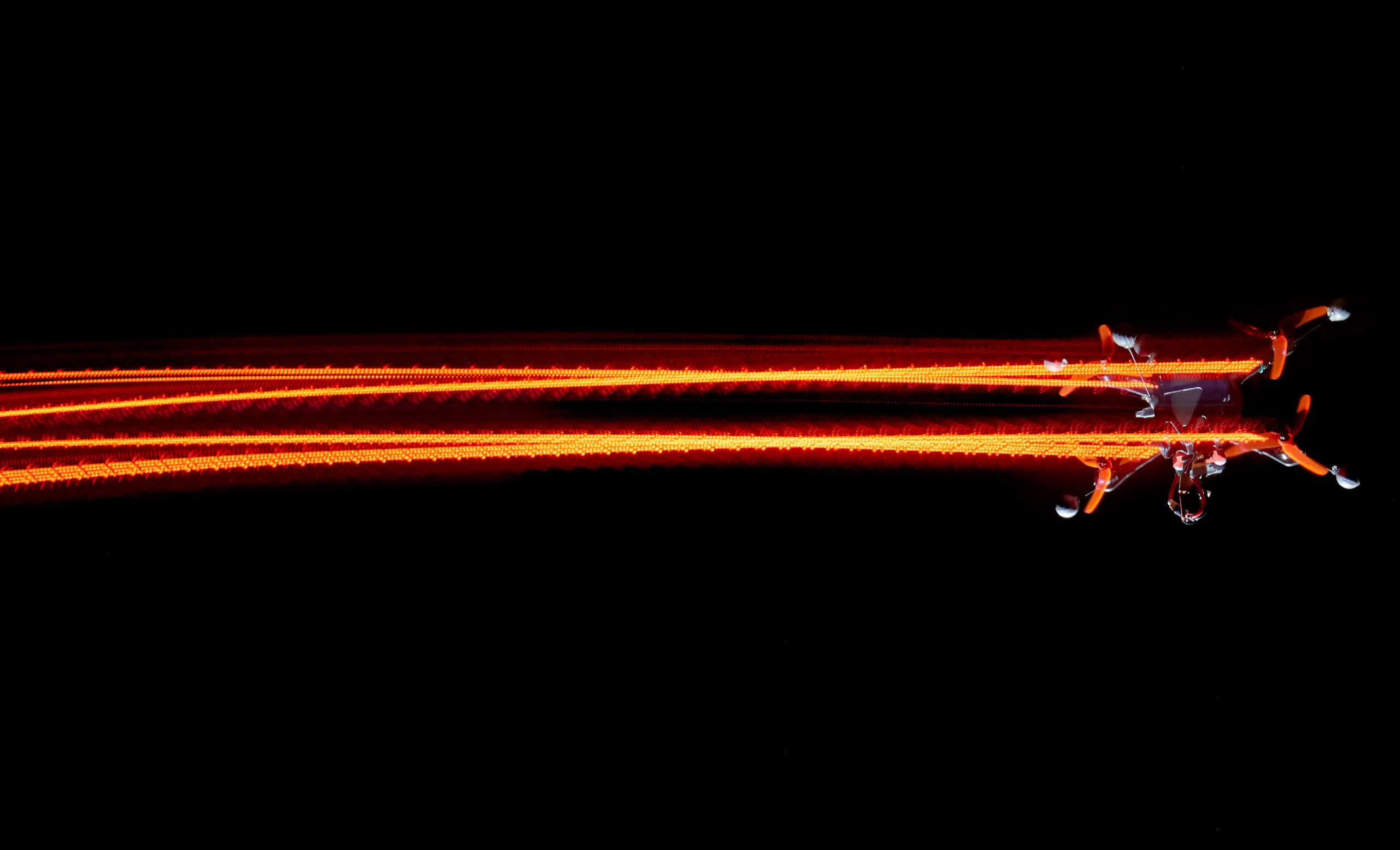The bleeding edge: Researchers at the University of Zurich (UZH) developed a machine-learning algorithm for controlling a quadcopter drone that can outperform professional drone racing pilots. The algorithm calculates "time-optimal trajectories" while also factoring in the drone's limitations.
The feat seems obvious at first glance---a machine learning system beat a human again, so what? However, pro drone racers are outstanding at what they do, and this marks the first time an autonomous system has beaten not one but two world-class human pilots.
To test the system, the UZH researchers set up a drone flight course (below). Both the autonomous drone and the human pilots were allowed to train on the course. Not only was the AI able to achieve the fastest lap time, but it also beat the two pro pilots through every waypoint by significant margins.
The AI uses external cameras to track the drone's path and make the proper calculations. The team hopes to modify the system to use the quad's onboard cameras. The use of onboard camera systems is vital for making other drone-related tasks practical. The researchers expect their work to be useful for applications such as search and rescue, building inspection, package delivery, and more.
The algorithm is also "computationally demanding." It currently takes up to an hour for the computer to precisely calculate the optimal trajectory. Because of this shortcoming, human pilots are in no fear of being replaced, at least for now. Clearly, in situations such as search and rescue, when time is critical, they will want a program that can more quickly calculate its path through waypoints.
All the technical details are outlined in the team's paper, which was recently published in Science Robotics.
Image credit: University of Zurich
